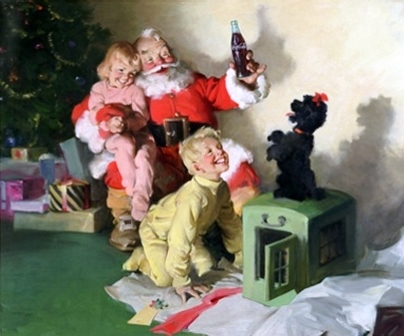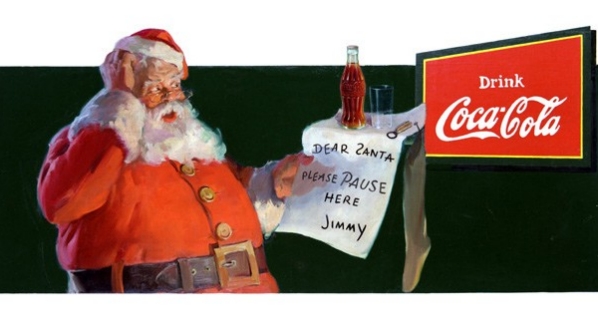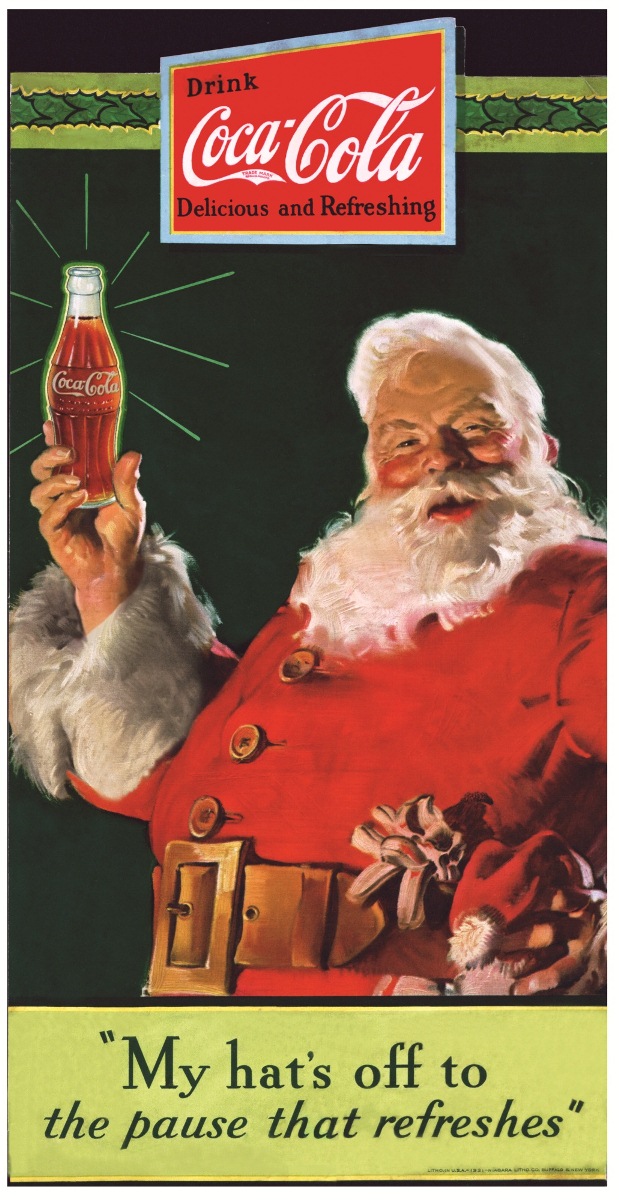Reply To:
Name - Reply Comment
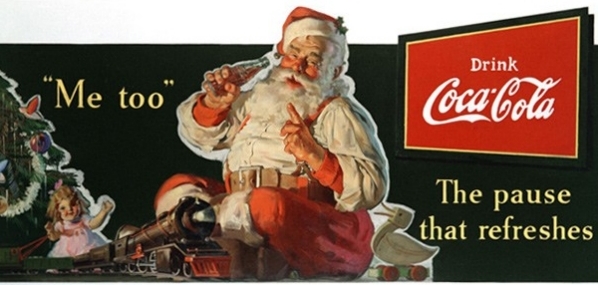 Coca-Cola has shaped the popular image of Santa that we know and love for decades
Coca-Cola has shaped the popular image of Santa that we know and love for decades
Over the years Coca-Cola with its well-loved Christmas adverts and campaigns, as well as its ongoing promise of refreshment, has become an integral part of the holiday season. The festive season however, would not be the same without the merry and jolly figure that many know and love as Santa Claus. What most people still fail to recognize is just how much the Coca-Cola Company has shaped the modern-day image of Santa Claus that we cherish so much today. The connection between Santa and Coca-Cola extends beyond decades and generations and the brand along with Finnish-American artist Haddon “Sunny” Sundblom were in fact responsible for bringing this jovial and festive icon to life.
The Coca-Cola Company contributed significantly to Santa Claus being perceived by popular culture, as a jolly, white-bearded man in a bright red suit, (today he has a sleigh and reindeer in tow as well as a trusty partner in Mrs. Claus). Since the 1920’s Coca-Cola had been running adverts that featured a stricter version of this iconic figure, in the vein of Thomas Nast. In 1930, artist Fred Mizen painted a department store Santa in a crowd, drinking a bottle Coca-Cola. The advert featured the world’s largest soda fountain and Mizen’s painting was thereafter captured in print.
It was in 1931 that the Coca-Cola Company made the decision to start running adverts in popular print magazines and Archie Lee, the executive handling the Coca-Cola account at the D’Arcy Advertising Agency, wanted a holiday campaign that showed a wholesome Santa who was realistic as well as magical and symbolic at the same time. Given the artistic requirements for Santa and the need for a well-balanced yet inspiring character, Michigan-born illustrator Haddon Sundblom was commissioned to develop advertising imagery featuring Santa Claus himself. Not a cartoon or unrealistic figure – but a wholesome man with human and relatable characteristics.
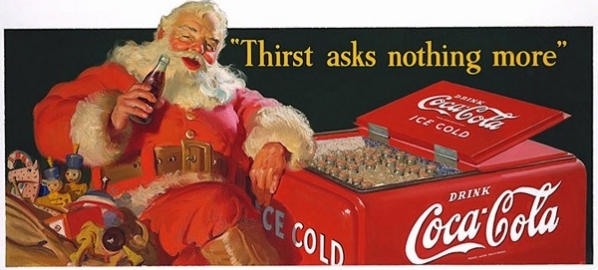
Seeking inspiration, Sundblom turned to Clement Clark Moore’s 1822 poem “A Visit From St. Nicholas” (more commonly referred to as “Twas the Night Before Christmas”. Moore’s description of St. Nicholas depicted an image of a warm, friendly, pleasantly plump, jovial and human Santa. He modelled his creation on Moore’s poem and his neighbor. The result was incredible and soon the world fell in love with this festive new Santa Claus.
Even though it's often said that Santa wears a red coat because red is the colour of Coca-Cola, Santa appeared in a red coat before Sundblom painted him. After Sundblom’sneighbour and friend (Lou Prentiss, a retired salesman) who had served as his trusty Santa model, passed away, he continued to create his Santa imagery; only he stepped into the role of model as well, using himself as inspiration for his iconic paintings. Sundblom’s Santa debuted in Coca-Cola ads in the Saturday Evening Post and appeared thereafter in Ladies Home Journal, National Geographic, the New Yorker and others, and it went on to capture hearts throughout the season. From 1931 to 1964, Coca-Cola advertising featured Santa delivering toys (and playing with them), pausing to read a letter and enjoy a Coca-Cola, visiting the children who stayed up to greet him, and raiding the refrigerators at a number of homes.
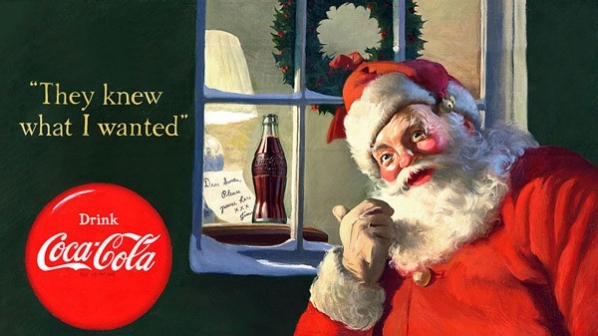
Eventually, Sundblom turned to a photograph to create the image of Santa. Over the years, people grew to love the Coca-Cola Santa images so much and paid such close attention to them, that if any changes were made, they sent letters to the Coca-Cola Company. One year, Santa’s belt was on backwards (perhaps because Sundblom was painting using a mirror at the time). Another year, Santa appeared without a wedding ring causing heartfelt distress about what happened to Mrs. Claus. Even the children, who appeared in the early adverts, were based on the artist’s neighbours – two little girls. To balance the images, Sundblom painted one of them as a boy.
In 2001, Sundblom’s 1962 painting was the basis for an animated TV commercial created by Alexandre Petrov (an Academy Award - winning animator) featuring the Coca-Cola Santa. Despite many decades going by, Sundblom’s images continue to inspire the modern-day imagery of Santa Claus that is loved by people across the globe.
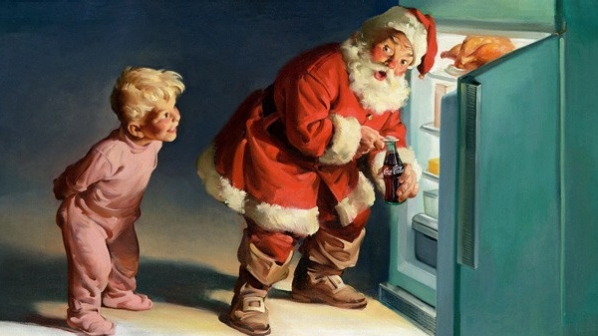
The original oil paintings that Sundblom created were adapted for Coca-Cola advertising in magazines and in-store displays, billboards, calendars and posters. Many of these items today have become highly prized collectibles and are greatly sought after by art connoisseurs. Sundblom created his final version of Santa in 1964, but for decades Coca-Cola’s advertising continued to feature images of Santa based on Sundblom’s original works. His work (a powerful collection of 42 pieces) remains amongst the Company’s most prized artworks and The Coca-Cola Company’s Archives Department has exhibited Sundblom’s Santa’s around the world in famous museums such as the Louvre, the Royal Ontario Museum and many more.
Today sharing a Coca-Cola with family and friends during the holiday season is a part and parcel of annual festivities. Thanks to Sundblom and Coca-Cola’s beautiful creation, the snowy white-bearded man, with his rosy cheeks and warm smile that radiates happiness, people around the world have grown to love and cherish a powerful image of Santa that has lived on to delight children and adults alike for nearly a century. There is no doubt that as the years go on, Haddon Sundblom, Coca-Cola and Santa Claus will remain connected and forever intertwined.
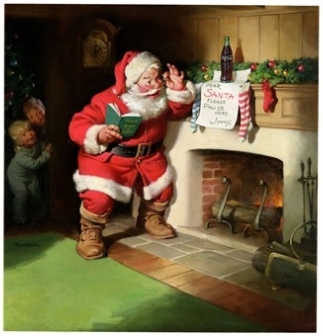
This captivating story stands as a strong reminder of how great brands can truly shape popular culture and create lasting bonds with consumers that can truly withstand the test of time.
